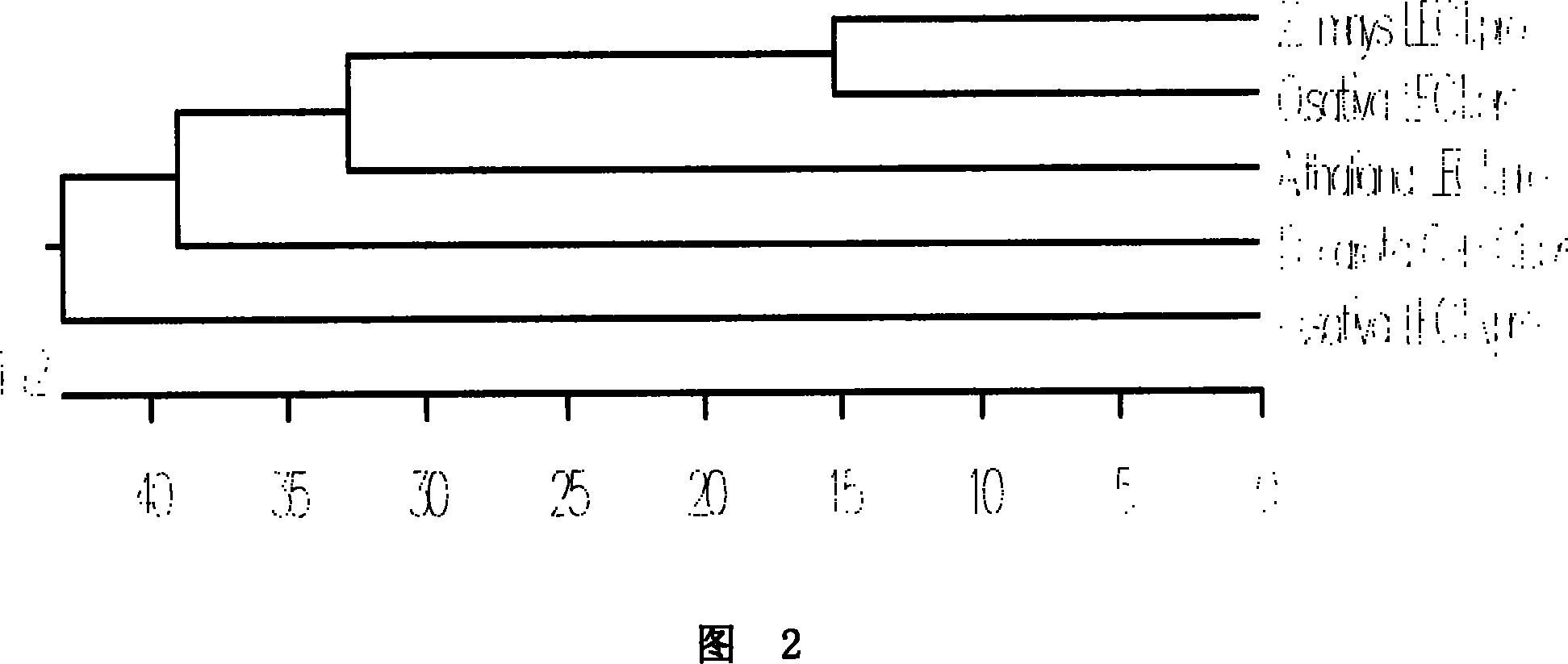Transcription factor of regulating and controlling vegetable fatty acid metabolism and its coding gene and application
A plant fatty acid and transcription factor technology, applied in a transcription factor regulating plant fatty acid metabolism and its coding gene and application field, can solve problems such as changing fatty acid content
- Summary
- Abstract
- Description
- Claims
- Application Information
AI Technical Summary
Problems solved by technology
Method used
Image
Examples
Embodiment 1
[0055] Embodiment 1, the cloning of the transcription factor gene AtLEC1 that regulates plant fatty acid metabolism
[0056] Use TRIZAL reagent (purchased from Invitrogen Company) and refer to the kit instructions to extract the total RNA of fresh fruit pods of Arabidopsis thaliana (Arabidopsis thaliana) Columbia ecotype (Col-0), and then use Invitrogen Company's SuperScript TM II Reverse Transcriptase kit and refer to the kit instructions to synthesize the first strand cDNA by reverse transcription, and then use the synthesized cDNA as a template, in primer P1 (upstream primer): 5'-CCCTCGAGAAATGACCAGCTCAGTCGTAGT-3' and P2 (downstream primer) : Under the guidance of 5'-AAACTAGTTCACTTATACTGACCAT-3', PCR amplifies the transcription factor gene that regulates plant fatty acid metabolism in Arabidopsis thaliana. After the reaction, the PCR amplification product is detected by 1% agarose gel electrophoresis. The DNA recovery kit of Dingguo Company recovered and purified the target...
Embodiment 2
[0057] Embodiment 2, the acquisition of AtLEC1 transgenic Arabidopsis
[0058] 1. Construction of plant expression vectors containing AtLEC1
[0059] The plasmid pGEM-TVector-AtLEC1 containing AtLEC1 constructed in Example 1 was double digested with restriction endonucleases Xho I and Spe I, and the double digestion product was detected by 1% agarose gel electrophoresis, and the recovered length was about 717bp The AtLEC1 gene fragment was purified and the recovered fragment was purified with T 4 DNA ligase (Roche Company) and vector PER8 (Zuo et al., Plant Journal.24: 265-273, 2000) or pX6 (Zuo et al., Nature Biotechnology 19: 157-161, 2001) connection, then the connection product was transformed into Escherichia coli (E.coli) DH5α competent cell by heat shock method, screened positive clone, it was inoculated in the 5mL LB liquid medium containing 50mg / L hygromycin, at 37 Cultivate at 200rpm for 12-16 hours, extract the plasmid, and identify the recombinant plasmid with re...
Embodiment 3
[0064] Example 3, detection of fatty acid metabolism of AtLEC1 overexpression plants
[0065] 1. Sudan red staining indicates changes in fatty acid content in AtLEC1 overexpression plants
[0066] The AtLEC1 transgenic plants grown for 20 days after germination in the induction medium in Example 2 and the Columbia wild-type control plants were soaked in 1% Sudan Red (Fat Red 7B) (Sigma Company), room temperature overnight (12-24 hours), Wash with deionized water 3 times, each time for 60 seconds, the staining results are shown in Figure 4, the accumulation of fatty acids in the roots and cotyledons of AtLEC1 transgenic plants was significantly higher than that of the wild type.
[0067] 2. GC-MS method to detect the content changes of various fatty acid components in AtLEC1 transgenic plants after induction
[0068] Take respectively 0.1 g of the whole plants of the AtLEC1 transgenic plants and control plants obtained in Example 2 and grow for 20 days after germination in the...
PUM
 Login to View More
Login to View More Abstract
Description
Claims
Application Information
 Login to View More
Login to View More - R&D
- Intellectual Property
- Life Sciences
- Materials
- Tech Scout
- Unparalleled Data Quality
- Higher Quality Content
- 60% Fewer Hallucinations
Browse by: Latest US Patents, China's latest patents, Technical Efficacy Thesaurus, Application Domain, Technology Topic, Popular Technical Reports.
© 2025 PatSnap. All rights reserved.Legal|Privacy policy|Modern Slavery Act Transparency Statement|Sitemap|About US| Contact US: help@patsnap.com



